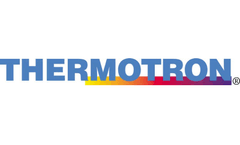Cell Genomics Articles & Analysis: Older
21 articles found
Unlike primary cells that have a limited lifespan, stable cell lines offer a consistent and renewable source of cells, making them invaluable for long-term studies and industrial applications. ...
Understanding Knockin Cell Line Generation At its core, knockin cell line generation utilizes sophisticated gene-editing technologies, such as CRISPR-Cas9, to facilitate precise genomic integration. This approach replaces or inserts new genetic material at targeted locations within a cell’s genome. Unlike ...
Genomic engineering in cell lines is a versatile tool for studying gene function, designing diseases models, biopharmaceutical research, drug discovery and many other applications. CRISPR (Clustered Regulatory Interspaced Short Palindromic Repeats)/Cas9 systems is a newly developed yet the most popular method for genome editing. It has been ...
Derived from the Lentivirus genus, lentiviral particles are a type of retrovirus renowned for their ability to integrate their genetic material into the host cell's genome. This characteristic makes them invaluable tools in gene expression studies, offering stable long-term expression and efficient gene delivery even in dividing and non-dividing ...
The factor that underpins the stability of these cell lines is the successful integration of this vector into the host cell's genome, laying the foundation for perpetual genetically stable cell generations. ...
Initially, coronaviruses connect to a cell surface receptor to enter host cells for viral binding, then enter endosomes, and eventually combine the viral and lysosomal membranes. ...
Host Cell Residual DNA (rcDNA) refers to fragments of DNA derived from host cells that may be present in biological products. ...
Hybridization-based microarrays are used to allow the simultaneous monitoring of expression levels of annotated genes in cell populations. However, genome-wide approaches have proven to provide more valuable insights into transcriptomes. ...
TCR-Seq is a state-of-the-art high-throughput sequencing technology that comprehensively analyzes T-cell clones. CD Genomics’ TCR-Seq service can be applied to various sample types, including blood, tissue, and cells, to obtain high-quality TCR sequences that enable researchers to gain a comprehensive understanding of ...
Determination of Vero cells’ whole genome sequence The ‘Vero’ lineage was isolated from kidney epithelial cells extracted from an African green monkey (Chlorocebus sp.) in 1962 at the Chiba University in Japan (Yasumura, Y. and Kawakita, Y. (1963). Nihon rinsho, 21, 1201-1215). The whole genome sequence ...
ByNuvonis
Cancer is a heterogenous mixture of diseases characterized by, among other things, the abnormal, uncontrolled growth of cells derived from otherwise healthy tissues (Hanahan 2022). Although cancer cells sometimes grow into balls of cells and stop there (so-called benign tumors), often they gain the ability to disperse throughout the body, seed the growth of other tumors, disrupt the function of a ...
Researchers at the National Institutes of Health have identified a specific network of proteins necessary for zebrafish cells to regenerate and restore hearing. Researchers at the National Human Genome Research Institute (NHGRI) led the study, which may help create treatments for hearing loss in humans. The findings were recently published in ...
With the development of sequencing technology, as well as cell isolation and whole genome amplification, single-cell sequencing technology, which sequences genomes at the level of individual cells, has gradually emerged to solve the problem of inaccessibility of microsamples for detection on the one hand, and to ...
Whole transcriptome sequencing allows for the acquisition of large scale datasets, allowing for the detection of specific microbes that outcompete the tumor cells in the tumor micro-environment, enabling the recruitment of immune cells and thereby mitigating tumor growth. ...
RNA Sequencing in Cardiovascular Disease Research The use of scRNA-seq technology in cardiovascular research has a wide range of applications. scRNA-seq not only identifies rare cell subpopulations, but it also allows for cellular trajectory analysis based on each cell's transcriptome, which has been particularly beneficial in clarifying cell ...
To date, CAR-T cell therapies have necessitated the collection of a patient's own T cells, which are then genetically reprogrammed in the laboratory to recognize specific cancer cells, allowing them to identify and destroy cancer cells once they are reintroduced into the body. ...
Unlike prokaryotic cells, eukaryotic cells can regulate gene expression at many different levels. ...
With that, let’s dive in. AAV Vector Biology Genome Viruses evolved to infect cells and leverage their cellular machinery to make copies of themselves, and AAV is no exception. ...
The ambient lab environment was significantly impacted by the weather. If it was dry outside, the cells would sometimes dry faster and the chromosomes wouldn’t spread adequately, leading to poor quality metaphase (the second stage of cell division) spreads. On a humid day, the cells would sometimes dry slower, causing overspreading where ...
The methotrexate-resistant cell strain M5, derived from Chinese hamster lung fibroblast cell line V79, provides a good model to study differential gene expression in response to stress. ...











